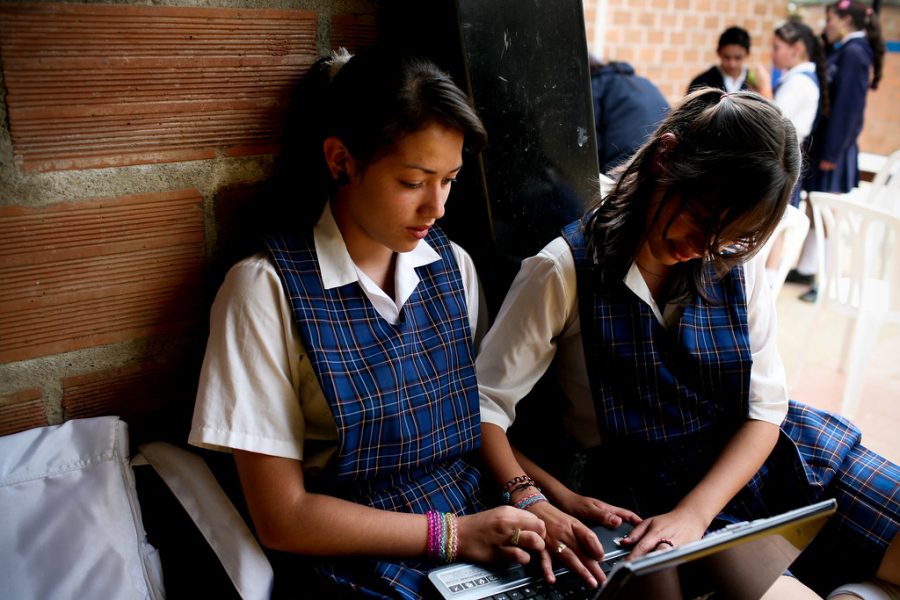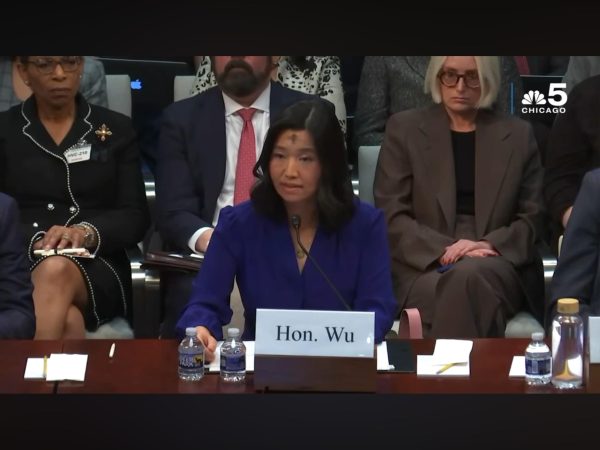Times Are Changing, Dress Codes Need to as Well
World Bank via Creative Commons License
Strict dress codes are common throughout schools in America.
Dress codes can be found in almost all, if not every, public school in America. What people don’t know is that dress codes are a significant source of sexism in schools. Dress codes are outdated and need to be reformed to be gender-neutral.
When looking at a school’s dress code, female students will usually have more regulations than male students. The reason implies that females have more chances to distract other students, particularly males, with their clothing.
Many find this statement offensive, as it suggests a lack of self-control by other students and portrays females as objects. These types of rules also suggest that there is something wrong with a person’s body or clothing. If you were to tell a 10-year-old female student that her shorts were too short, or that her shirt is too low cut, she’s left with the idea that there is something wrong with her clothing or body. This creates issues with body image and self-confidence, all things that students shouldn’t have to struggle with, especially in a school setting.
According to a survey done by the National Center for Education Statistics, 48.8% of public schools in 2017-2018 enforced a strict dress code. This means that these strict dress codes are impacting a large number of students. Given that most dress codes are generally similar or have the same basic terms, a significant number of these dress codes are focused on females more than males.
Dress codes also affect parents. According to a survey done by Today, 89% of parents agree that dress codes are too confusing, and specifically, 94% of parents of teen girls agree that they are too confusing.
Students, especially teenage students, use their clothing as a way to express themselves. Putting a limit on how they’re able to do that is unfair, especially as the reasoning behind that is the potential for distractions. Why should female students have to cover themselves up to prevent distracting their male peers, as if their education and comfort are more valuable than that of female students?
The consequences for violating the dress code vary from school to school, but they all have one thing in common. They all take away from a student’s education. Some of the most common consequences are changing into new clothes, detention, and even suspension. These all require taking time out of a student’s day, and frequent violations can cause multiple removals from class. Frequent removals from class and the stress of detention or suspension can cause students to fall behind in class, and prevent them from working on their schoolwork.
When presented with the debate of having a dress code, many argue that dress codes keep students focused less on their clothes, teach students discipline, and make it so that students are perceived better by their peers and teachers.
Dress codes have the opposite effect when it comes to keeping students focused less on their clothes. Seeing as they aren’t able to wear what they want to and have to settle for something that conforms to their dress code, they can feel an even greater sense of insecurity and discomfort. If they were able to wear what they wanted to, they would feel more confident and wouldn’t be distressed about their clothing or how they look.
Dress codes also don’t teach discipline. If dress codes teach students anything, it teaches them how to conform to society’s messed up image that men become criminals when faced with “inappropriately” dressed women, and that women are objects and are perceived as sexual in every aspect. Dress codes only continue to promote and support this image. While some may think that dress codes make it so that students are better perceived by teachers and peers, many think the opposite. Someone who freely expresses themselves through clothing and appearance is more likely to be respected and found interesting than one who does not, especially in more modern and recent times.
Individuality and uniqueness are becoming more valuable as people are learning to embrace their differences. What’s necessary is more refined and gender-neutral dress codes. Certain regulations need to be reconsidered, as they aren’t necessary and are excessive. Student’s opinions and thoughts also need to be considered, as they are the ones directly affected by these rules. If students talk to their parents about their thoughts on their dress code and both students and parents voice their opinions to superintendents/principals/school administrations, a conversation is bound to pick up, which is what leads to change.
Dress codes do nothing but teach children how to conform to society’s unfair and sexist ideals. Individuality and uniqueness are things that need to be embraced and promoted, especially in a school setting, where minds are young and impressionable. It’s time for people to open their eyes and stop trying to push parts of the past onto the present.
Celia Coleman is a freshman at HWRHS, and a student journalist. Celia has always had a love for reading and writing, and wanted to expand her knowledge...







